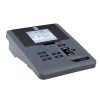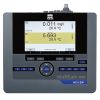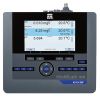YSI TruLine Lead Electrode
Features
- Solid state ISE
- Double junction reference
- 0.02-20,700 mg/L range
- Free ground shipping
- Expedited repair and warranty service
- Lifetime technical support
- More
Overview
The YSI TruLine Lead Electrode features BNC connection and can be used with the YSI TruLab 1320. It can also be used with the YSI MultiLab 4010-2 or 4010-3 if a BNC adapter is installed.
TruLine Series
The TruLine series of laboratory ISEs consists of 15 electrodes that have an integrated reference, eliminating the need to have a separate reference half-cell. Each TruLine ISE has a refillable double-junction reference, resulting in a long electrode life and exceptional measurement reliability. TruLine ISEs can be connected to any ISE instrument featuring BNC connection, including the YSI 1320. Reference/electrode fill solution, ionic strength adjustor, and a small bottle of standard are included with each ISE.
Benefits
- Wide selection of 15 electrodes for 16 different parameters
- 4 sensor technologies - gas sensing, polymer/PVC membrane, solid state, and glass sensor
- Combination (i.e. full-cell), refillable electrodes with double-junction reference
- BNC connection, 1m cable
- Made in the U.S.A
- Reference/electrode fill solution, ionic strength adjustor, and a small bottle of standard included with each ISE
- 12-month warranty for solid state, glass sensor, and gas-sensing ISEs
- 9-month warranty for ISEs with polymer/PVC membrane
- (1) Electrode with 1m cable
- (1) Small bottle of reference/electrode fill solution
- (1) Small bottle of ionic strength adjuster
- (1) Small bottle of standard solution
In The News
Source Water Monitoring in Albany, New York: Tracing Water Quality throughout Tributaries
Thousands of US cities pull their drinking water from natural source waters like reservoirs, rivers, and streams, making overall watershed health a key consideration for water providers. In Albany, New York, the Albany Department of Water and Water Supply delivers drinking water to over 100,000 residents as well as monitors and manages the larger drinking water supply watershed. Hannah Doherty, Environmental Specialist at the Albany Department of Water and Water Supply , spends her days working with a small team to monitor the drinking supply and the connected water bodies. Doherty explains, “We’re the first to encounter the water that ends up being the drinking water.
Read MoreWildfire Prevention in the Sierra Nevada Region with the Yuba Watershed Institute
Though recent wildfires have sparked new conversations about wildfire management and response, groups like the Yuba Watershed Institute have been monitoring the forests and water resources of the Sierra Nevada region for decades, managing approximately 5,000 acres of land with the Bureau of Land Management (BLM) and about 7,000 acres in private land partnerships. The goal of the Institute is to work with local communities and land agencies to improve watershed and forestry management through informed practices and public outreach. The goals of the Yuba Watershed Institute are three-fold: Improve the ability of fire suppression agencies like the California Department of Forestry and Fire Protection ( CAL FIRE ) and the US Forest Service.
Read MoreWave Sensors Integration with NexSens Buoys: A Cutting-Edge Solution for Wave Measurment
Real-time wave data supports accurate weather prediction, safe and efficient maritime operations, and provides valuable safety and operating condition information for recreation and commercial fishing. Understanding wave dynamics also helps with the design of protective coastal structures like seawalls, breakwaters, and jetties. It also supports better prediction of their impact on sediment transport and coastal geomorphology. Wave data is a key factor in qualifying and designing offshore wind farms and harnessing kinetic energy for electrical generation. It helps with the understanding of ocean-atmosphere interactions and contributes to studies of sea-level rise and climate change impacts.
Read More













